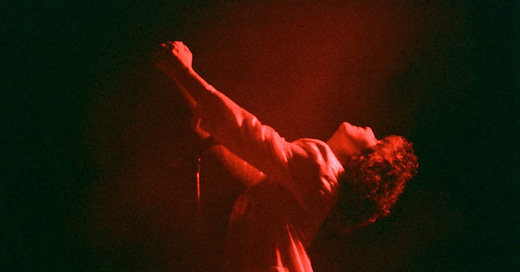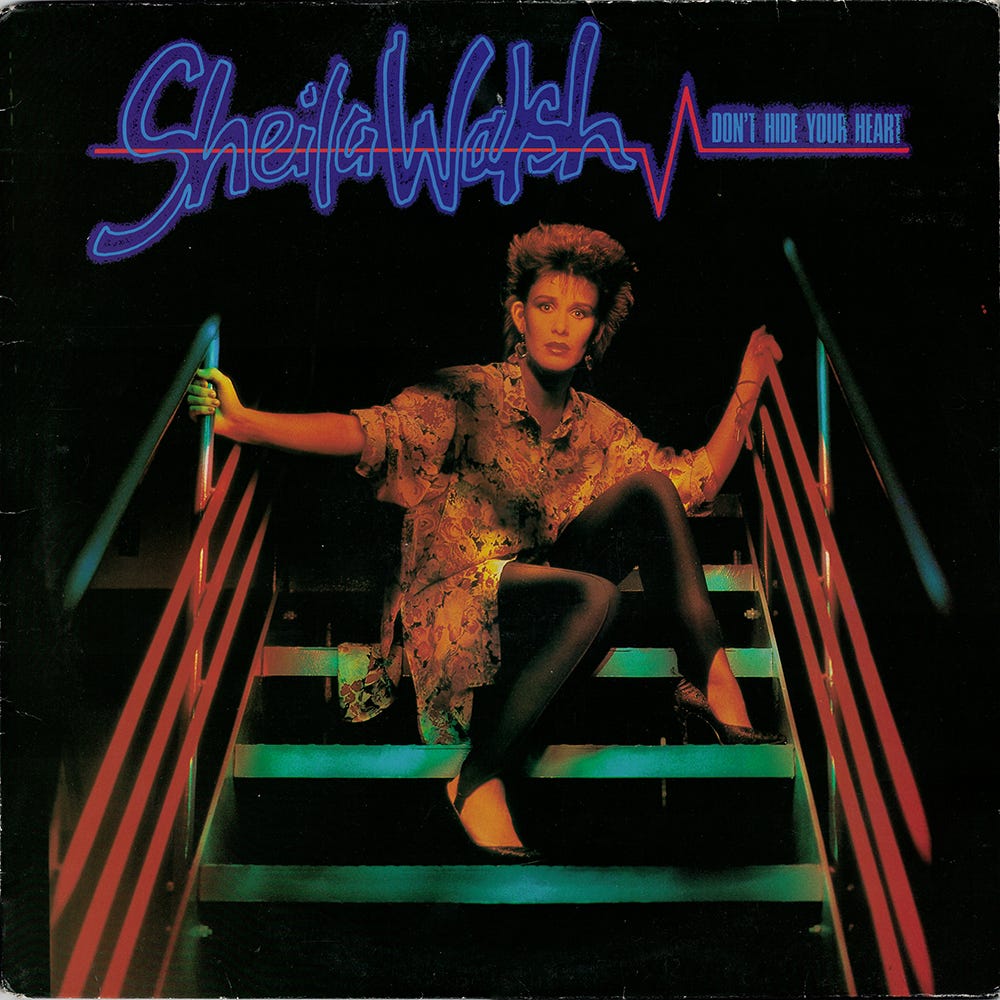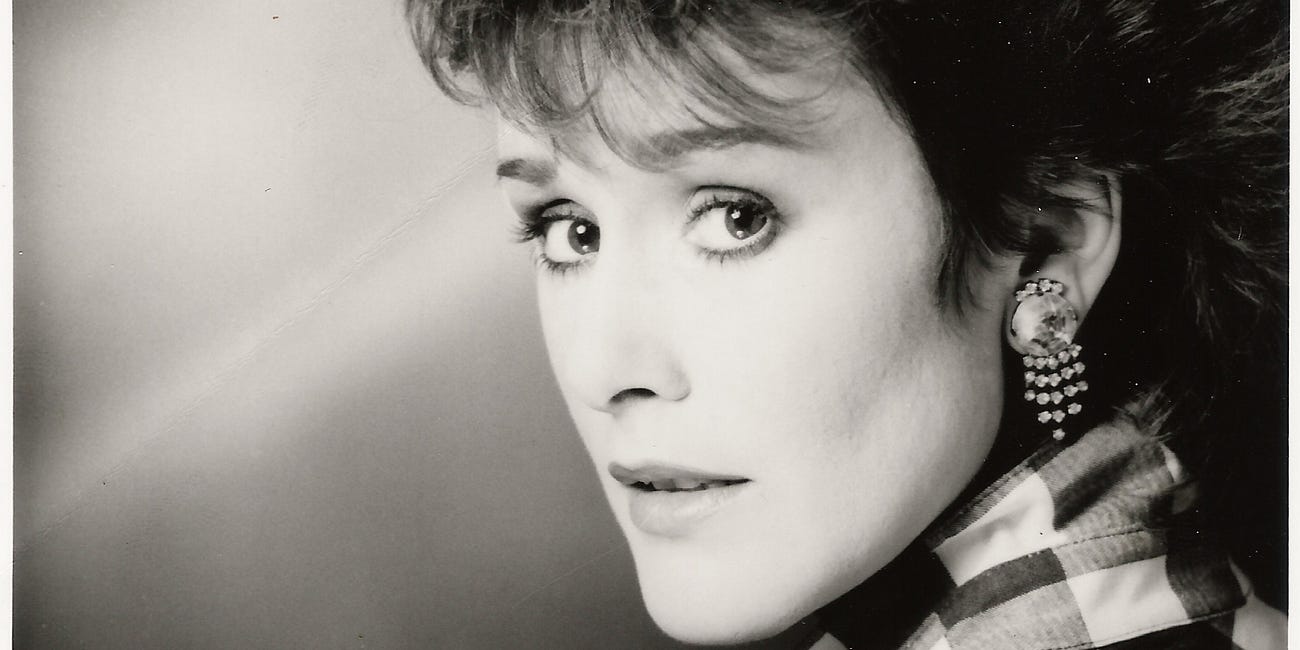Sheila Walsh: Don't Hide Your Heart (1985)
Balancing the boldness of her earlier works with a softer, more mainstream sound, this Grammy-nominated release showcased her range as an artist.
For the last two years, I’ve written about Sheila Walsh's oft-forgotten music. Today, she is a fixture on Christian television, a New York Times best-selling author, and a sought-after speaker. However, she introduced herself to the Christian marketplace as an innovative performing artist.
1985’s Don’t Hide Your Heart came at a definitive moment in contemporary Christian music. With annual sales of 75 million dollars, the genre, just barely fifteen years old, was on the precipice of a commercial breakthrough. With groundbreaking albums like Amy Grant’s Unguarded, Russ Taff’s Medals, Steve Taylor’s On the Fritz, Rez Band’s Between Heaven N Hell, Mylon LeFevre and Broken Heart’s Sheep In Wolves Clothing, and Walsh’s Don’t Hide Your Heart and Tramaine Hawkins’ #1 dance single, “Fall Down (Spirit of Love)”, CCM flexed the possibility of breaking out of the subculture of the church into popular culture as a viable art form.
What distinguished Walsh from the artists above was the cultural cache she had acquired from hosting The Rock Gospel Show on the BBC and the involvement of British pop icon Cliff Richard in developing her career. He’d co-produced her Grammy-nominated 1983 effort War of Love, recorded a pop duet with her for the British version of the album, “Drifting,” and delivered backing vocals on 1984’s Triumph in the Air. They shared a manager and toured together frequently, which brought a certain amount of validation amongst those who might not have otherwise given Christian rock a chance.
Walsh had a dual struggle as an artist with international ambition. In England, Contemporary Christian Music was not a multi-million-dollar enterprise, so her work had to carry the creative weight of her secular counterparts like Sheena Easton and Culture Club. In the United States, however, her challenges had nothing to do with the art itself. She told the Evening Chronicle, a British newspaper,
“If you do a concert here, people tend to judge you on the quality of music and how well you sing, but in America, they judge you on how you look….A lot of people who do street work with kids have an image that they need for that kind of work but find that a lot of churches won’t support them. Then you can have someone who looks right but has nothing to say.”
Her image had startled American audiences unaccustomed to a woman with short hair, new wave-inspired clothing, a dramatic performance style that incorporated laser lighting and dry ice. Some, as witnessed by his writer, deemed her demonic, while others perceived her presentation to be indicative of self-absorption. She negotiated these perceptions in a number of ways. 1984’s Triumph in the Air presented Sheila with a softer look—a sweater decorated with clouds in the place of her leather and lace aesthetic from 1983’s War of Love—and sound. If War of Love was a new wave-influenced pop/rock, Triumph In the Air shifted Sheila to a more electronic power pop with the pronounced insertion of radio-ready ballads. 1985’s Don’t Hide Your Heart, however, was an effort to balance the bold and the beautiful.
The cover revealed a stiletto-ed Walsh in spandex pants with spiked hair, a far cry from the Casual Corner motif of Triumph In the Air. Musically, the album was a tour de force of crunchy rock (“Don’t Hide Your Heart”, “We’re All One'“), new wave-influenced theatrical pop (“Not Guilty”, ” Thief in the Night”), power ballads (“Jesus Call Your Lambs,” “It’s All For You”), and danceable power pop (“Light Across the World,” “Alpha Omega”). Walsh’s lilting soprano had acquired some grit and growl that had not been present on her previous albums, as if to dare critics to compare her to Julie Andrews as one critic had when reviewing Future Eyes. Producers Craig Pruess and Keith Bessey maintained the cutting-edge production Walsh had been known for.
The greater challenge for Walsh came lyrically. While her first two albums worked diligently to sing about spiritual matters in a way the unchurched could understand, her integration into the American evangelical world created a need for songs that more specifically addressed the Christian audience. She began this focus with the compositions of Graham Kendrick, Chris Eaton, and Teri DeSario on Triumph in the Air. Don’t Hide Your Heart was an extension of that work, utilizing the same writers for the bulk of the album. This negotiation reduced her chances of appealing to the broader market. One critic astutely observed that she was “easing up the throttle a little.” The adjustment to her sound did, however, result in her first Top 10 Christian radio hit with Teri DeSario’s “Jesus Call Your Lambs,” a duet with Cliff Richard about the mending of a troubled marriage. On the opposite end of the spectrum, “Under the Gun,” was a bold message that warned of the dangers of nuclear weaponry, perhaps the only statement of its kind made while this subject was a hot topic.
Even bolder, though, was her Michael Omartian-produced cover of Bryn Haworth’s “We’re All One,” a song that served as a companion to Walsh’s commentary in interviews about her experience in the United States. More broadly, the song confronted the divisive ways in which theology was weaponized by church insiders against fellow Christians and the world. Sheila wrote in her memoir God Put a Fighter In Me, “The subtle thing about controversy within the church is the way it eats into our time. We spend so long discussing our theological preferences, and on our doorsteps the world cries out for bread.” “We’re All One” is an affirmation of everyone’s positionality—a need for both/and, not either/or. In a guest column for Cash Box, she expanded on this notion:
“I’ve asked myself for a long time…why…the ‘sacred’ world is kept so separate from the ‘secular.’ I’ve come to the conclusion that many of us are needed right where we are…there will be those amongst us, however, who will march to a different tune; whose vision will be to raid the future for God, moving out of the comfort of the gospel world.”
The lyrics for “We’re All One” trouble the exclusivity of fundamentalism, calling into question not only in-fighting amongst Christians, but the contradiction that the relationship between Christianity and militarism raises. The idea of oneness is often used within Christianity to passively imply exclusivity, utilized with the assumption that the group being urged to be one are already Christians, but Haworth and Walsh assert that “everybody can be saved…we’re all one.”
On the heels of the album’s release, she and labelmate Steve Taylor released a twelve-inch single containing a previously unissued duet and two remixes from their new individual album releases and embarked on the TransAtlantic Tour. They were greeted on some stops by picketers passing out leaflets that “accused Steve Taylor and me of dragging people away from God’s kingdom and said that people who listened to our music would end up in hell,” she recalled in her memoir.
Newsweek reported on Sheila’s performance at the 1985 Christian Artist’s Seminar in Estes Park and wrote that she “artfully mixed the sacred and sexy,” which provoked the ire of televangelist Jimmy Swaggart, who wrote in his anti-Christian rock book, Religious Rock and Roll: A Wolf in Sheep’s Clothing, “Can you tell me why so-called Christian entertainers are even mixing what a secular magazine like Newsweek calls the ‘sacred and sexy’? What does that kind of sensuality have to do with the gospel of Jesus Christ?”
Despite the hoopla, Don’t Hide Your Heart, according to critics, was “her most commercial, most accessible album yet, without sacrificing the qualities that have made her a critical favorite.” With the album, she earned her second Grammy nomination and subsequently signed with Myrrh Records in 1986, where she began a new phase of her recording career and creative identity.
In reflection on her musical past, Walsh told me in our 2016 interview, “I absolutely love it and wish I’d enjoyed it more at the time…When I was doing music in the United Kingdom…anywhere in Europe, it was just so fun and I loved it and the guys in the band. But I would say the first few years in the States were rocky because of the questions of, you know, the style of music…I wish I’d enjoyed it more, and I wish I’d maybe spoken out more. And then I think, ‘No. I need to have compassion for that girl. She was doing her best.”
Other Features on Sheila Walsh
Reflections on the Music & Theology of Sheila Walsh's 'War of Love'
The eighties were an intense decade. In 1984, I was in the fourth grade attending a Southern Baptist school, seemingly inundated by a lot of rules and regulations. The boys' hair was measured regularly to make sure it wasn’t touching our collars, girls’ skirts were measured to make sure they weren’t “too far” above their knees, and we signed contracts a…
4 Albums Turning 40 That You Should Hear
I had high hopes of being able to write extensive pieces about a dozen or so albums that are celebrating their 40th anniversary this year—but other obligations and the strictures of time are making that impossible. Nonetheless—they are important albums and I want to acknowledge their importance in the ways that I can.








What a brave, beautiful (in every way) woman. Thank you for sharing Sheila Walsh's story and music!